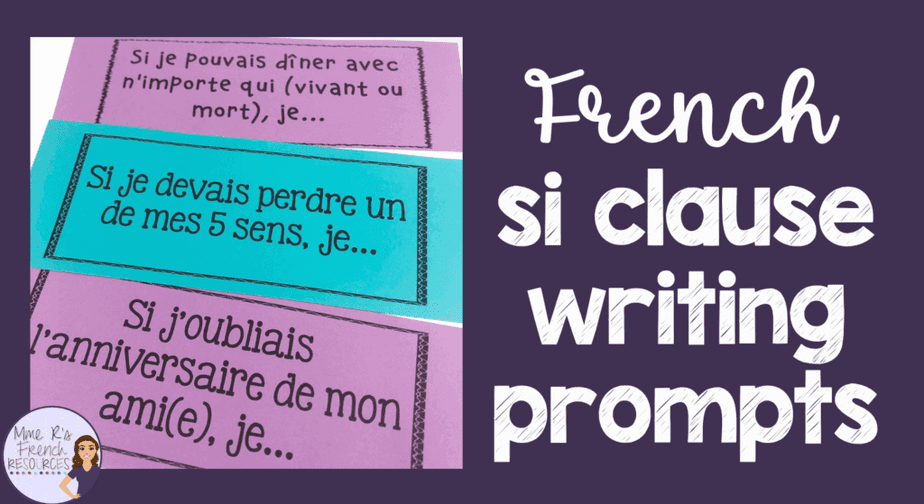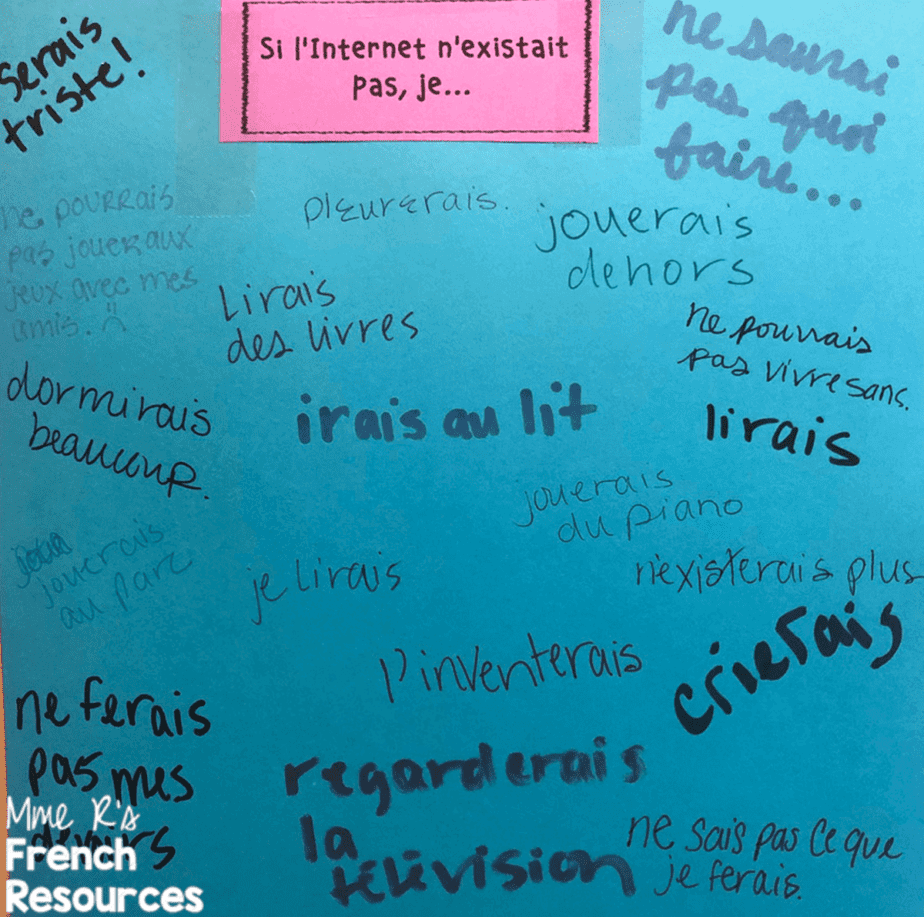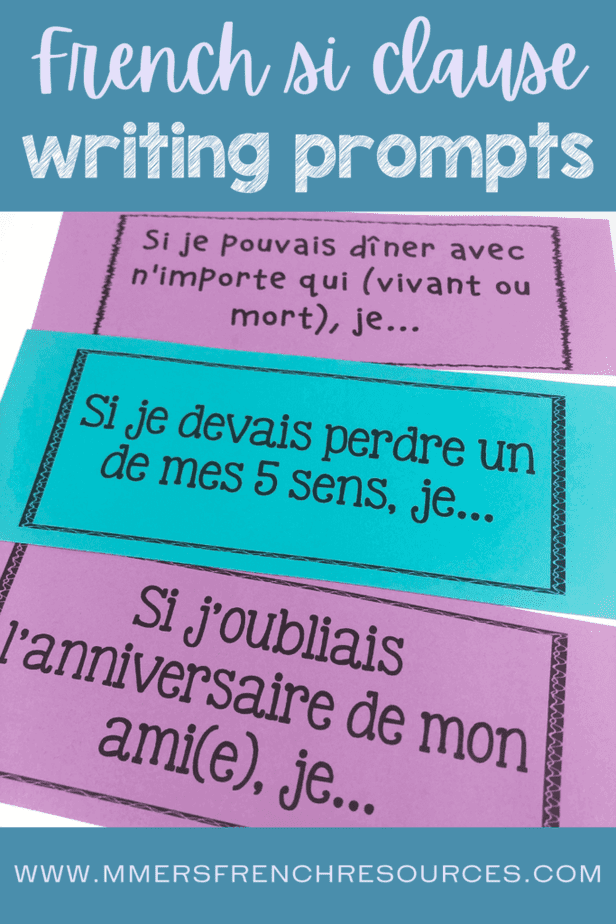
Teaching how to use a French si clause can be really difficult, but the French conditional is one of my favorite tenses to teach!
After several years of French, some of the students probably feel a little … bored. Are they able to memorize things? Without a doubt, some of the students can memorize any conjugation and recite to us out loud an entire verb chart (or 10). Does that mean that they are understanding when and how to use those verbs? Does it mean they can use them correctly in conversation?
Recalling French verb conjugation is important, but using verbs correctly in context is our main goal, right?
Teaching French si clauses:
I’m a huge fan of movement, because it’s just more fun! Students love to talk about what would happen, so I came up with some French si clauses and asked students to come up with the result clauses. I put them up on posters around my room like this one shown below, and as students moved around the room completing the si clauses on the posters, they got to see what ideas their classmates had, too. It’s always so much fun!

Click here to see this French si clause writing activity at my TpT store!
How to set up these writing prompts:
I start the activity with writing prompts that I put on the wall on poster paper. Each prompt includes a French si clause. I use about 10-12 different prompts and posters for a class of 20-25. I often have 2 or more classes doing this activity, so when I do, I might put 2 posters (or a larger poster) for each question to accommodate all of their answers.
Students do a tour of the room in pairs and complete the si clauses. They aren’t necessarily working together, but I do pairs because I’ve never had enough wall space for more posters than that. This allows two students to work on the same question at a time. They will work with that partner later, though, so be sure to pair them up well.
The writing part of this activity takes my students about 1 minute per question, but you can set whatever time limit you want. If you post 10-12 questions, you should plan for at least 10-15 minutes to do the writing portion.
You’ll notice that not every sentence is 100% correct. That’s okay! This is an activity we do to get them thinking hypothetically. We do this as sort of a brainstorming activity. They get plenty of time to correct their spelling as we work further into the unit.
Following up the writing session:
Once students have done the tour of the room, then they sit back down with their partners and go over their answers orally. Each student should answer the questions with his/her partner and explain why he/she answered that way. I usually give my classes about 7-10 minutes to do this part so that they can use references to find any vocabulary they were lacking during the first activity. After students have had ample time to work with a partner, I randomly question students.
As a follow-up, you can give students one last French si clause to complete as an exit ticket. I usually ask students to answer and then explain why they answered that way. I give them about 3-4 minutes to write a quality answer and turn it in.
Need FREE exit tickets? Get them here!
In total, this activity usually takes about 35 minutes with teacher directions, movement time, follow-up questions, and the exit ticket. I usually do it after students have learned the irregular stems of the conditional and are beginning to work on si clauses. It is a good idea to make sure they understand the structure Si + imparfait –> conditionnel before doing it though, or you will find many sentences ending in the imparfait.
Of all the verb tenses, the conditional is by far my favorite! Using French si clauses doesn’t have to be tricky, and it can be a ton of fun. Just look for fun hypothetical questions or encourage students to imagine their lives using the futur simple, and they’ll be making their own great sentences in no time.
Need something hands-on to help students use the conditional and future with si clauses correctly? This French si clause matching activity is a lot of fun!



nicole says
this is awesome! thank you!!
Ashley says
You’re welcome! I hope your class loves it! 🙂